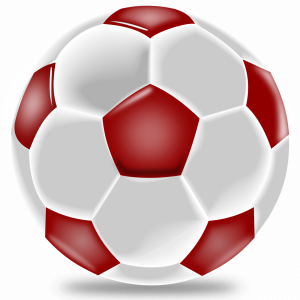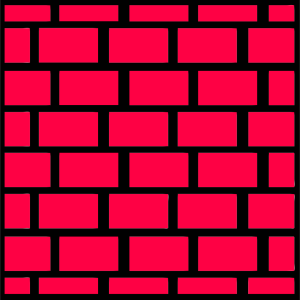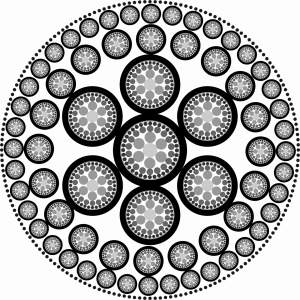Activity 1 – 3D Objects at Home.
Focus – I have explored how simple 3D objects can be constructed from a net of 2D shapes.
Resources – paper and pens.
Look together around the home for 3D objects such as cupboards, books, sweet tins, food packaging. Draw some different items, then sketch what you think the net of each might be. You are invited to bring your drawing into school to share and discuss.
Activity 2 – Cube Nets.
Focus – I have explored how simple 3D objects can be constructed from a net of 2D shapes.
Resources – squared paper (from school), pencils or pens.
Take turns to draw two nets of cubes on squared paper:
one which you think will work and one which you think won’t work.
Swap nets and guess which is which, then check by cutting and folding.
Activity 3 – Shape Robot.
Focus – I have further explored a variety of 2D shapes – Straight edges.
Resources – paper and pens.
Work together to design a picture of a robot which is made up of a variety of 2D shapes. (e.g. square, pentagons, circles, etc). List the different shapes you have used. You are invited to bring your drawing into school to share and discuss.
Activity 4 – What is it that Shape?
Focus – I have further explored a variety of 2D shapes – Straight edges.
Work together to think about where you see different 2D shapes and to think about why particular shapes are used for particular purposes. For example, a football pitch is a rectangle because …
Activity 5 – Design It!
Focus – have further explored a variety of 2D shapes – Curved edges.
Resources – paper and pens, circles to draw round e.g. tins of different sizes.
Use circles to create a design for a fashion item such as a tie, T-shirt or bag. You are invited to bring your drawing into school to share and discuss.
Activity 6 – Circle Line Designs.
Focus – have further explored a variety of 2D shapes – Curved edges.
Resources – circle shape (tin) and a ruler.
Make your own designs – first draw a circle. Then draw a diameter (a line across the centre of the circle) and mark
dots on the circumference (outside edge of the circle) at both ends.
Draw another diameter, dividing the circle into quarters and again mark dots on the circumference. Draw lines joining each dot to the other dots. Draw two more diameters, dividing the circle into eighths, mark the dots and join them all with lines.
Activity 7 – 3D Object Search.
Focus – I have further explored a variety of 3D objects – Flat faces.
Resources – Internet access (optional), advertisements, newspapers, magazines.
Work together to find pictures or drawings of 3D objects with flat faces in leaflets, newspapers, magazines or the internet. Likely examples include buildings, food packaging, toys. Now write the names of the 3D objects. You are invited to bring your drawing into school to share and discuss.
Activity 8 – Net Paper.
Focus – I have further explored a variety of 3D objects – Flat faces.
Resources – large sheet of paper e.g. newspaper.
Look for objects from around the home which has a cuboid shape (e.g. a book, cereal packet, box). Draw around the faces of the object (on a large sheet of paper e.g. newspaper) to create a net of a cuboid the same size.
Share your nets and the other person tries to guess what the original object was.
Activity 9 – Imagine!
Focus – I have further explored a variety of 3D objects – Curved surfaces.
Resources – paper.
Draw a fantasy building or street involving spheres, hemispheres, cylinders and cones. Youy may need to think about how the buildings are secured in place so they don’t roll away.
Activity 10 – What else could it be?
Focus – I have further explored a variety of 3D objects – Curved surfaces.
Work together to think of examples where different 3D objects with curved faces are used. Now think of another 3D object and imagine this object replacing the curved object.
Would it be possible for this to be used?
What difficulties would there be if their new 3D object were used?
For example, could tennis be played with a cylindrical ball instead of a spherical ball?
Activity 11 – Tessellation Search.
Focus – I can split, combine and tessellate 2D shapes to make new shapes, pictures and patterns.
Resources – paper and pens.
Discuss together examples of tessellations at home or in the media and sketch any examples you find. You are invited to bring your tessellations into school to share and discuss.
Activity 12 – Shape Environment.
Focus – I have explored how to create shapes and patterns by reflecting and rotating lines and shapes.
Work together to look at patterns which involve rotation or reflection at home or during the journey to school. Examples might include designs on crockery, designs on fences and brickwork on buildings. Record and describe the patterns.
Activity 13 – Shape Discussion 1 – What have I Learned?
Focus – I can solve problems involving shape, position and movement.
Resources – paper and pen.
Ask your child to think about what they have learned in their work on Shape, position and movement.
They record what they think are the most interesting things they have learned as well as things they would like to learn more about. You are invited to bring your answers into school to share and discuss.
Activity 14 – Shape Discussion 2 – Who Uses It?
Focus – I can solve problems involving shape, position and movement.
Resources – paper and pen.
Ask your child to think about which jobs require a good knowledge and understanding of the different aspects of shape, position and movement. They make a poster to show their ideas and bring to class to share and discuss.











